Fort Saint Elmo
Fort Saint Elmo (Maltese: Forti Sant'Iermu) is a star fort in Valletta, Malta. It stands on the seaward shore of the Sciberras Peninsula that divides Marsamxett Harbour from Grand Harbour, and commands the entrances to both harbours along with Fort Tigné and Fort Ricasoli. It is best known for its role in the Great Siege of Malta in 1565.
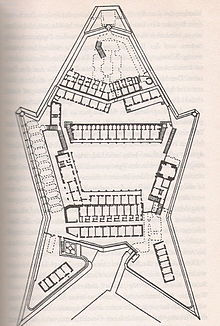 Plan of Fort Saint Elmo.
Plan of Fort Saint Elmo.By 1417, the local militia had already established a permanent watch post on the tip of the Sciberras Peninsula.[1] In 1488, the Aragonese built a watchtower on Saint Elmo Point, and it was dedicated to Erasmus of Formia, better known as Saint Elmo. In 1533, the Order of Saint John reinforced the tower due to its strategic location.[2] In 1551, an Ottoman raid occurred in which the Turkish fleet sailed into Marsamxett Harbour unopposed. Due to this, it was decided that a major expansion was necessary, and in 1552 the tower was demolished and a new star fort began to be built. It was designed by a Spanish Engineer named Pietro Pardo.[3] It had a cavalier, a covertway and a tenaille. A ravelin was hastily constructed months before the 1565 siege.[4]
Great Siege of 1565In 1565, the Ottomans invaded Malta once again with much more force than in 1551, in the Great Siege of Malta. Fort Saint Elmo was the scene of some of the most intense fighting of this siege, and it withstood massive bombardment from Turkish cannon deployed on Mount Sciberras that overlooked the fort and from batteries on the north arm of Marsamextt Harbour, the present site of Fort Tigné. The initial garrison of the fort was around one hundred and fifty knights and six hundred soldiers, the majority of whom were Spanish, and sixty armed galley slaves. The garrison could be reinforced by boat from the forts across the Grand Harbour at Birgu and Senglea.[4]
 The Siege of Malta - Capture of Fort Saint Elmo by Matteo Perez d'Aleccio
The Siege of Malta - Capture of Fort Saint Elmo by Matteo Perez d'AleccioDuring the bombardment of the fort, a cannon misfired and hit the top of its parapet, sending shards in all directions. Debris from the impact killed the gunner and mortally injured the corsair and Ottoman admiral Dragut, one of the most competent of the Ottoman commanders. The fort withstood the siege for 28 days, falling to the Turks on 23 June 1565. None of the defending knights survived, and only nine of the Maltese defenders survived by swimming across to Fort St. Angelo on the other side of the Grand Harbour after Fort St Elmo fell. The long siege bought much needed time for the preparation of the other two fortresses and the arrival of reinforcements from Spain.[4]
Reconstruction and modificationsAfter the siege, Grandmaster Jean Parisot de Valette decided to build a new city on the peninsula. Construction started in 1566, and Francesco Laparelli was sent by the Pope to design the fortifications. The ruined Fort Saint Elmo was rebuilt and integrated within the city walls.
 The Carafa Enceinte. The towers on top of the bastions are concrete coastal defences built in World War II.
The Carafa Enceinte. The towers on top of the bastions are concrete coastal defences built in World War II.The fort was modified a number of times in the 17th century. The Vendôme Bastion was built in 1614, and in 1687 the Carafa Enceinte was built on the foreshore surrounding the entire fort. In the late 17th century, the fort was directly linked to the cavalier and part of the ditch was filled in burying some of the original ramparts in the process.[5] In the 18th century, a new polverista was built in the Vendome Bastion,[1] and stores were built in the area between the main fort and the Carafa Enceinte. These are known as Pinto Stores and they and the surrounding area form what is known as Lower Saint Elmo.[6]
On 8 September 1775, Fort Saint Elmo was captured by 13 rebel priests along with Saint James Cavalier in what became known as the Revolt of the Priests. The Order's flag was lowered and a banner of Saint Paul was raised instead. The Order managed to recapture St Elmo so the rebels in control of St James surrendered as well. Eventually the rebels were tried and three were executed while the others were exiled or imprisoned. The heads of the three executed men were displayed on the corners of St James Cavalier but were removed soon after Emmanuel de Rohan-Polduc was elected Grandmaster in November of the same year.[7]
British ruleThe fort was once again modified in the early 19th century by the British, when a musketry parapet was built. In 1855, the polverista at Vendome Bastion was converted into an armoury, and some small arms from the Palace Armoury were transferred there. In the 1870s, more works were done on Abercrombie's Bastion. In 1917, the first heart operation to be performed on a soldier was done at St Elmo.[8] In the interwar period gun emplacements were built to house new twin 6-pounder QF guns.[1]
The fort was the site of the first aerial bombardment of Malta on 11 June 1940. Among the people that were in the fort during the air raid was the military doctor Ċensu Tabone, who later became President of Malta. He survived the attack, but six others were killed in the same air raid.[9]
On 26 July 1941, the Italians launched a seaborne attack on the Grand Harbour with two human torpedoes, four MAS boats and six MT boats. The force was detected early on by a British radar facility, and the coastal artillery at Saint Elmo opened fire when the Italians approached to close range. Fifteen of the attackers were killed and 18 captured, and all the human torpedoes and MT boats, along with two of the MAS boats were lost. One of the MT boats hit St. Elmo Bridge, which linked the breakwater with the tip of the peninsula near the fort, and the bridge collapsed. The bridge was never restored, and it was only in 2012 that a new one was built in its place with a similar but different design.[10]
Parts of the fort were severely damaged during the war and some scars of the bombing can still be seen to this day.[11] The Royal Malta Artillery left the fort on 26 March 1972, ending its long military history. Parts of the fort subsequently fell in disuse.

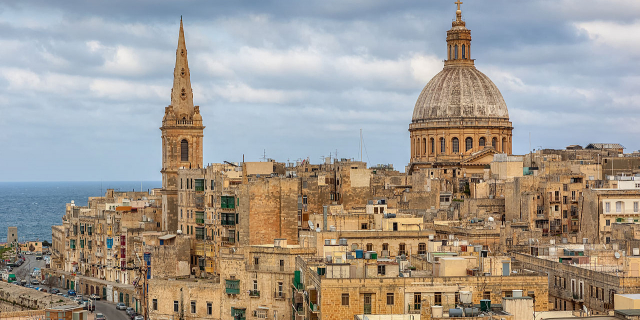










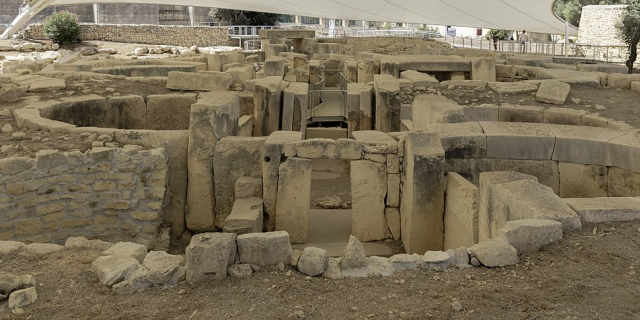
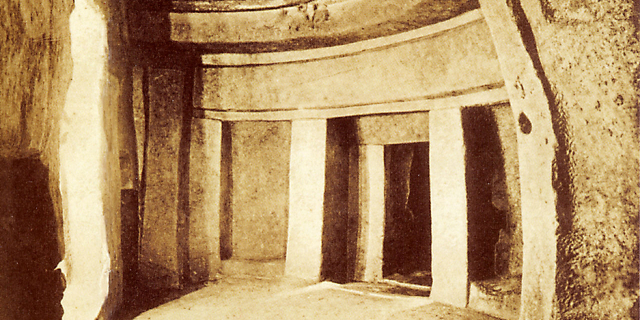

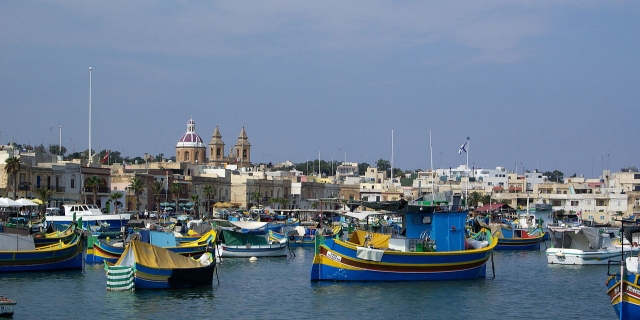

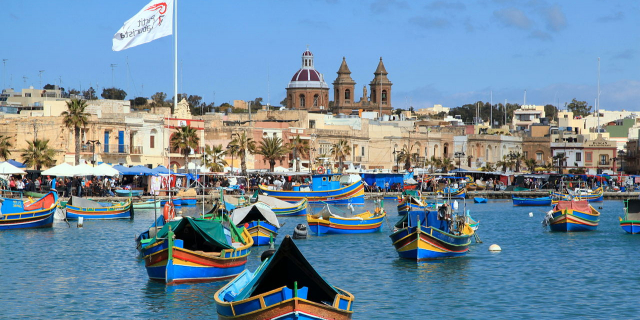
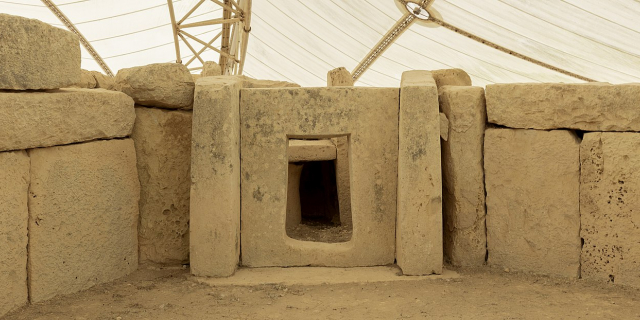
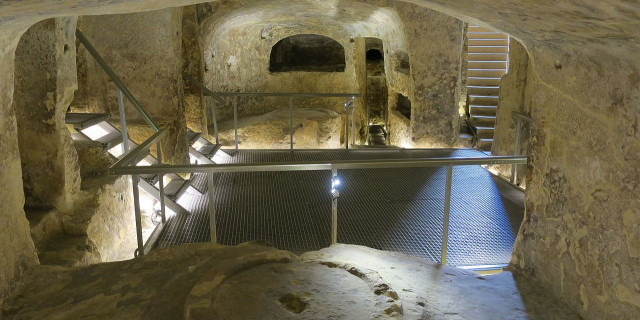
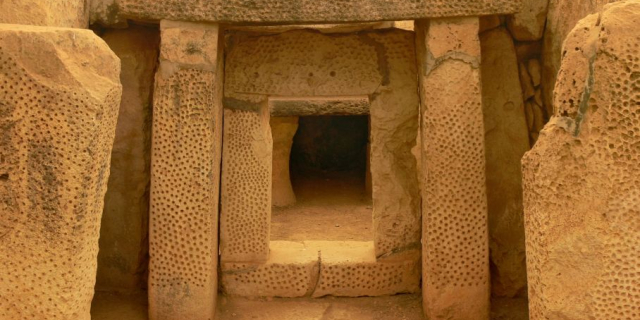




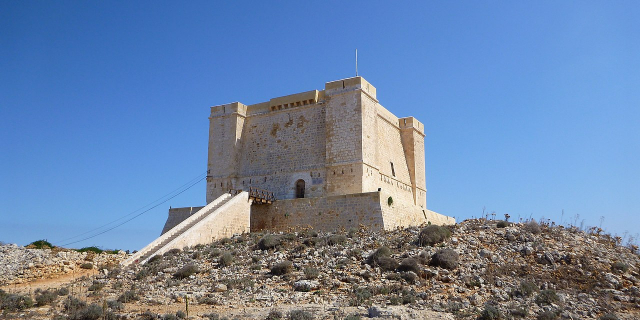



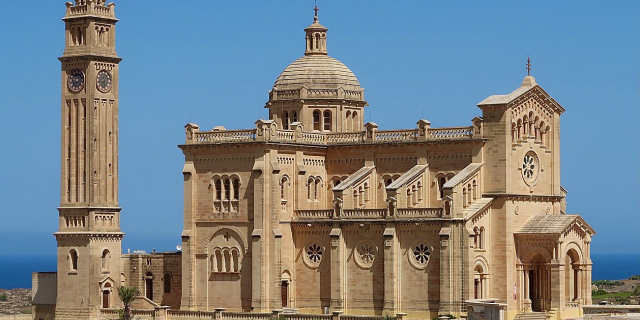
Add new comment